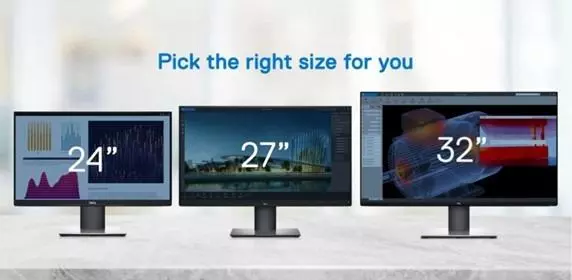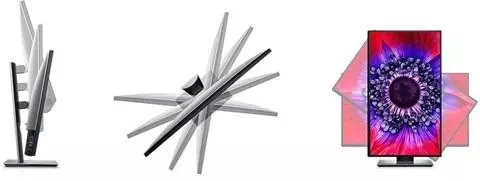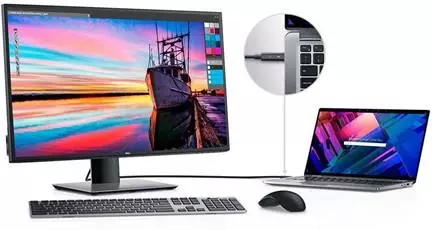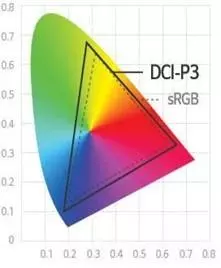
Maximize remote work: Choosing the right monitor for your home office
By Yoon Lee

Many companies have quickly pivoted to remote work arrangements for their employees, with some industries working from home for the first time ever. But with the rush to enable remote workforces, many employees end up working 8-12 hours a day off their laptop screens. This is not ideal, especially when working on spreadsheets and switching between different applications for prolonged hours.
Monitors are an essential tool for an effective work from home environment—they can improve your
employee’s work experience, boost productivity and be a smart health investment. As the global leader in PC monitors for seven years running, Dell is offering some tips for selecting the right monitor for your remote work needs.
Screen Size and Resolution
Determining the right screen size and resolution is an important first step. Having more screen space to see and do more has a direct correlation to increasing productivity. The typical screen size for most office work, including emails, Internet browsing and Microsoft Office documents, is between 24 and 32 inches.

If bigger and wider screen space is a priority, you should consider more than one monitor or go with one ultrawide curved monitor, commonly between 34 to 49-inches. Monitors with ultra-thin bezels are ideal for creating seamless multi-monitor configurations, resulting in less distraction from bezel breaks.
Financial service workers, software developers, and data scientists typically benefit from one large screen space (43 to 49-inches) to view large amounts of data in their workspace. They often appreciate monitors that can connect and display content from multiple PCs.
Resolution and screen size go hand-in-hand. With more pixels in each square inch of the display, users will get more realistic and sharper images. A higher resolution is recommended for larger monitors. For example, 27-inch QHD (2560 x 1440), 32-inch 4K (3840 x 2160) and 34-inch WQHD (3440 x 1440) displays are the recommended size and resolution with more than 100 pixels per inch.

A QHD 2560 X 1440p resolution monitor delivers 1.77 times more pixels to see all the finer details than FHD 1920 X 1080p resolution monitor
Ergonomics & Well-Being
Remote work employees tend to put in longer working hours, so having the right equipment to support employee well-being is crucial. According to Forrester Research, 92% of workers believe ergonomically optimized monitors are critically important for improving their productivity. Squinting at a screen or slouching over your monitor can lead to poor posture, back issues and eye strain. To help with these
issues, it’s important to choose a versatile monitor with height and tilt adjustability to ensure correct posture and viewing alignment.

Ergonomically optimized monitors allow you to adjust the height, tilt, swivel and rotate the monitor to your ideal position
Like other electronic devices, monitors emit low blue light that can strain your eyes when viewed over extended periods of time. Choose monitors with low blue light and flicker-free technology to minimize blue light emission and flickering images to optimize for eye comfort.
Connectivity
Next, consider what devices you want to connect to your new monitor and check your laptop ports for compatibility. Common ports on laptops today include HDMI, USB-C and Thunderbolt 3. You can reduce cable clutter and opt for a clean desk setup with a USB-C monitor, which allows users to charge their laptop and transfer data, audio and video signals all in one single cable.

USB-C Connectivity: Meet all your video, data and power needs with a single cable, while reducing cable clutter at the same time.
In addition, if you have other accessories that you would like to connect to your monitor – such as a keyboard and mouse, webcam, headset or charging cell phones – make sure you pick a monitor with multiple USB ports. Dell monitors typically provide four USB ports, allowing you to connect to more devices.
Energy Efficiency
Like other home appliances, energy efficiency is important. Monitors that are certified for reduced energy consumption like Energy Star or EPEAT can save you up to $52 USD in annual utility bills.
Advanced monitors may also offer features that reduce power consumption by putting the monitor to sleep after a period of inactivity.

Color
Color coverage, accuracy and calibration are key factors users should consider when purchasing a
monitor for creative workflows such as photography and videography. For color critical tasks, select a monitor that not only comes with a wider color gamut but also provides true color accuracy.
There are multiple color spaces such as sRGB, Adobe RGB and DCI-P3. With the widest color space, DCI-P3 can show more colors and richer images. For professionals who require optimized color performance, choosing a monitor with DCI-P3 above 95% coverage with factory calibration will help with color critical tasks.
For professionals who require calibrated color performance, pick a monitor with a built-in colorimeter or a monitor that’s compatible with an external colorimeter for quick and easy calibration.
Collaboration
Monitors that include a built-in camera, microphone and speakers are growing in popularity with the increased frequency of video conferencing calls. If you’re on video calls for majority of the work day, look for a monitor that includes these collaborative features to ensure that participants can hear and see you clearly.
Having the Right Devices for Your New Work Environment
With more organizations offering flexible working arrangement, selecting the right monitor for your home office is crucial from a productivity standpoint. Users should consider future proofing their monitor investments with larger screen sizes, higher resolutions and better connectivity.
Investing in the right monitors for a more comfortable working environment at home will reap returns in the long run in terms of overall health and work productivity. For more information on Dell Monitors for Work, contact us at First Call today!
1 Source: IDC Worldwide Quarterly PC Monitor Tracker, Q1 2020
ADDITIONAL RESOURCES
Let's Work Together!
Schedule a discovery meeting with one of our Business Development Executives to discuss how First Call can help you solve your Business’s IT frustrations!


